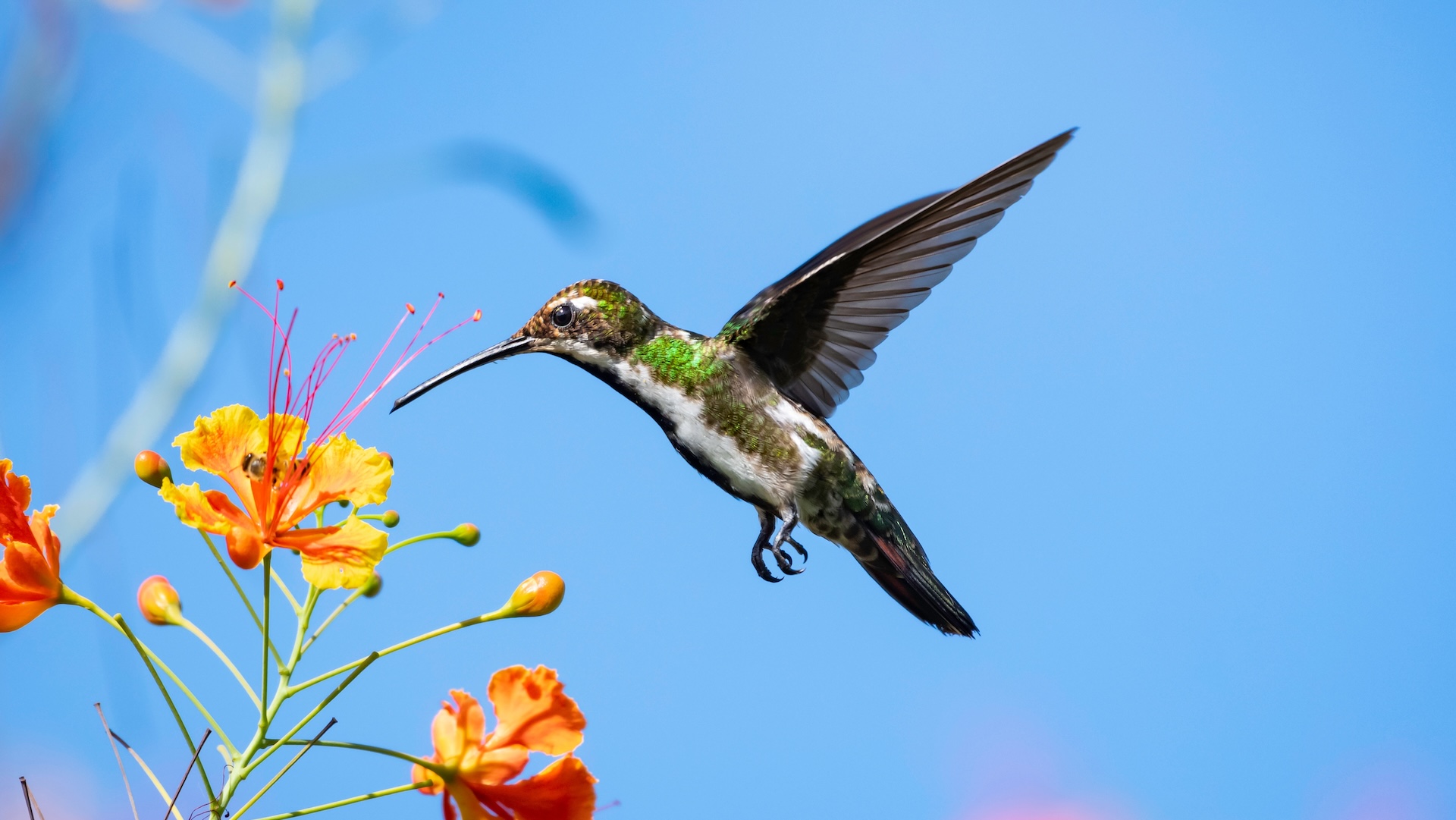
For more than 100 years, researchers assumed that dinosaurs were like giant lizards: sluggish reptiles that spent most of their day basking in the sun. This image changed when we started to realize that dinosaurs were far more similar to birds than to modern-day lizards. Today, researchers agree that birds are technically dinosaurs — the only ones to have survived the mass extinction 66 million years ago. Yet, if that's true, why aren't birds cold-blooded like most modern-day reptiles?
The answer is straightforward: Most dinosaurs were probably warm-blooded, too.
Birds are descended from a diverse group of two-legged dinosaurs called theropods, which included giant, meat-eating predators like Tyrannosaurus rex, as well as the smaller 3-foot-long (1 meter) Mononykus.
Like mammals, birds are warm-blooded, or endothermic, meaning they internally regulate their own body temperature. Endothermic animals have a higher metabolism, which permits more physically demanding activities — like flying — but requires more calories to maintain.
"Animals that are warm-blooded are usually more active," Holly Woodward, a professor of anatomy and paleontology at Oklahoma State University, told Live Science. "They can be active into the night. And so it's an evolutionary strategy in that you can be foraging for food when other animals can't, because they're too cold and slow."
Related: What happened when the dinosaur-killing asteroid slammed into Earth?
Birds generally have a higher metabolism than similarly sized mammals and keep their body temperatures up — between 106 and 109 degrees Fahrenheit (41 to 43 degrees Celsius). Hummingbirds, which flap their wings 720 to 5,400 times per minute, need to consume about half their body weight every day, or eat every 10 to 15 minutes.
In contrast, cold-blooded animals, or ectotherms — like most modern reptiles and fish — rely on their environment to change their body temperature. Because they don't expend as much energy heating themselves, they don't need to eat as regularly; alligators, for example, can go more than a year without food.
For years, researchers assumed that because most modern reptiles are ectothermic, ancient reptiles must have been, too.
"So often, if you look at living animals and make an assumption about the ancestral state based on the current condition, it will lead you wrong," Jingmai O'Connor, associate curator of fossil reptiles at the Field Museum in Chicago, told Live Science.
Views started changing around the late 1960s, with the discovery of a bird-like specimen called Deinonychus. Since then, researchers have found physical characteristics that indicate many dinosaurs, including ancient birds, were warm-blooded. The presence of feathers is one such indication — feathers help animals conserve body heat, which isn't needed in ectotherms.
In her lab, Woodward has been looking at another proxy: bone tissue microstructure. She's found that endotherms have much different bones than ectotherms, mostly because ectotherms usually grow more slowly. This growth rate is reflected in the bones' mineral component, which she described as "little fibers."
"I imagine them kind of as Pick-up sticks: If you're growing really slowly, those fibers tend to orient themselves parallel to each other, and so they become flat," Woodward said. "But if you're growing faster, the fibers are just sort of a jumble," which is the type of structure she tends to see in warm-blooded bones.
Her observations have shown that dinosaurs' bone structures are more similar to birds' and mammals' than to crocodiles'.
Exactly when warm-bloodedness first popped up is unclear. All dinosaurs (including birds) and crocodiles share a common reptilian ancestor, and both Woodward and O'Connor said there's good evidence this ancestor was warm-blooded — meaning endothermy arose prior to dinosaurs. Cold-blooded dinosaurs would have appeared later.
But it's possible endothermy showed up even earlier. If both mammals and most reptiles were endothermic, perhaps their common ancestor, which lived about 310 million years ago, was also endothermic. However, endothermy most likely evolved independently in mammals, O'Connor said.
Future research could challenge these ideas, though. "We make so many assumptions," O'Connor said, "and then the data proves us wrong."







